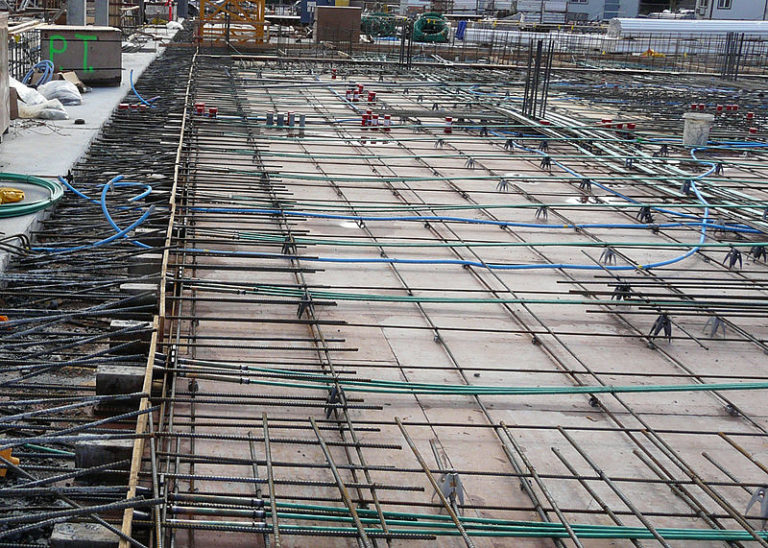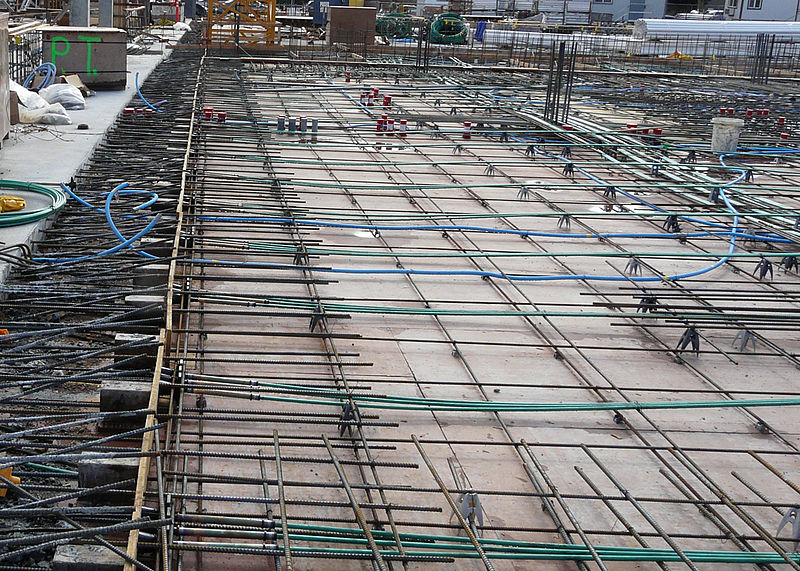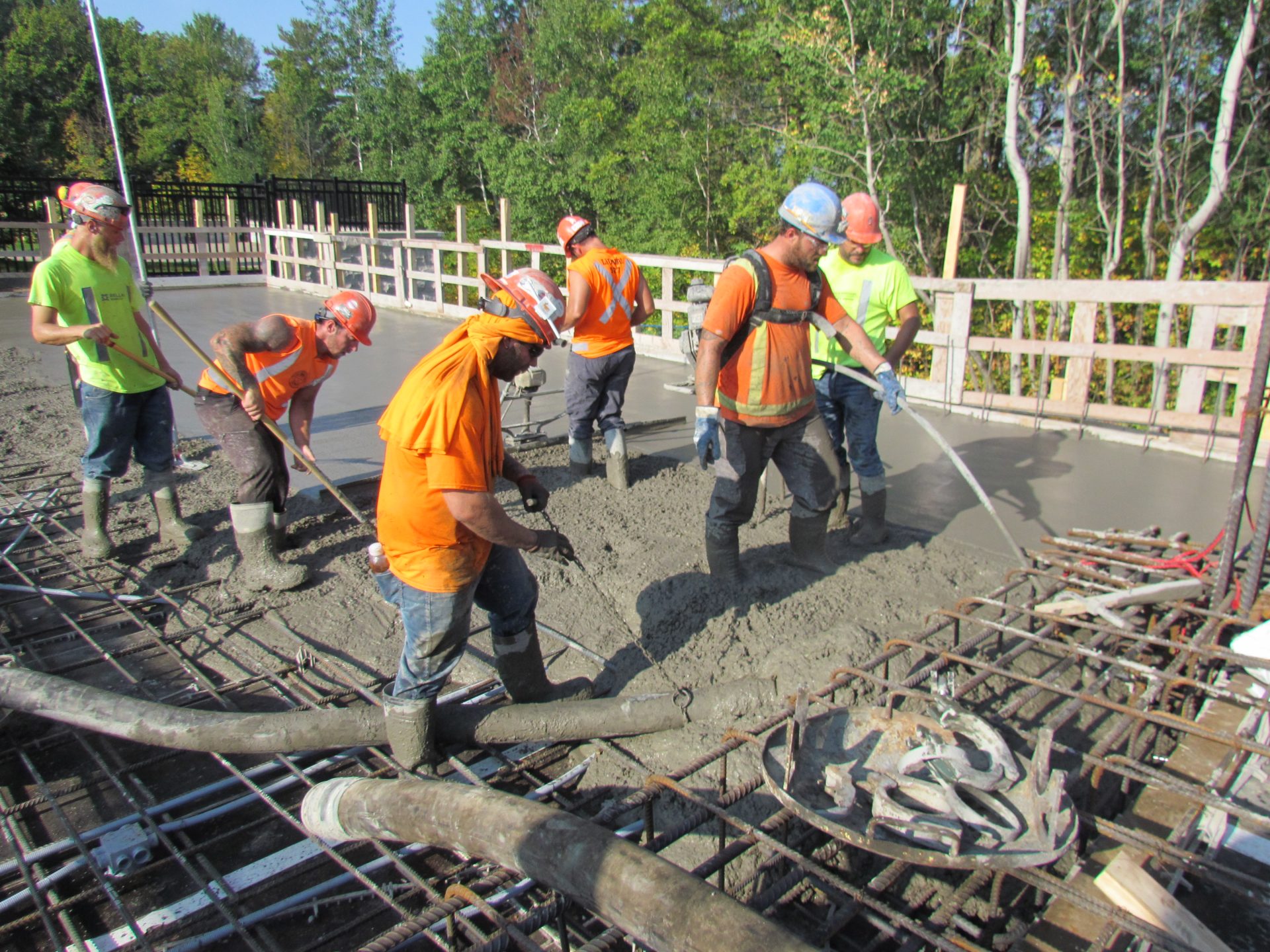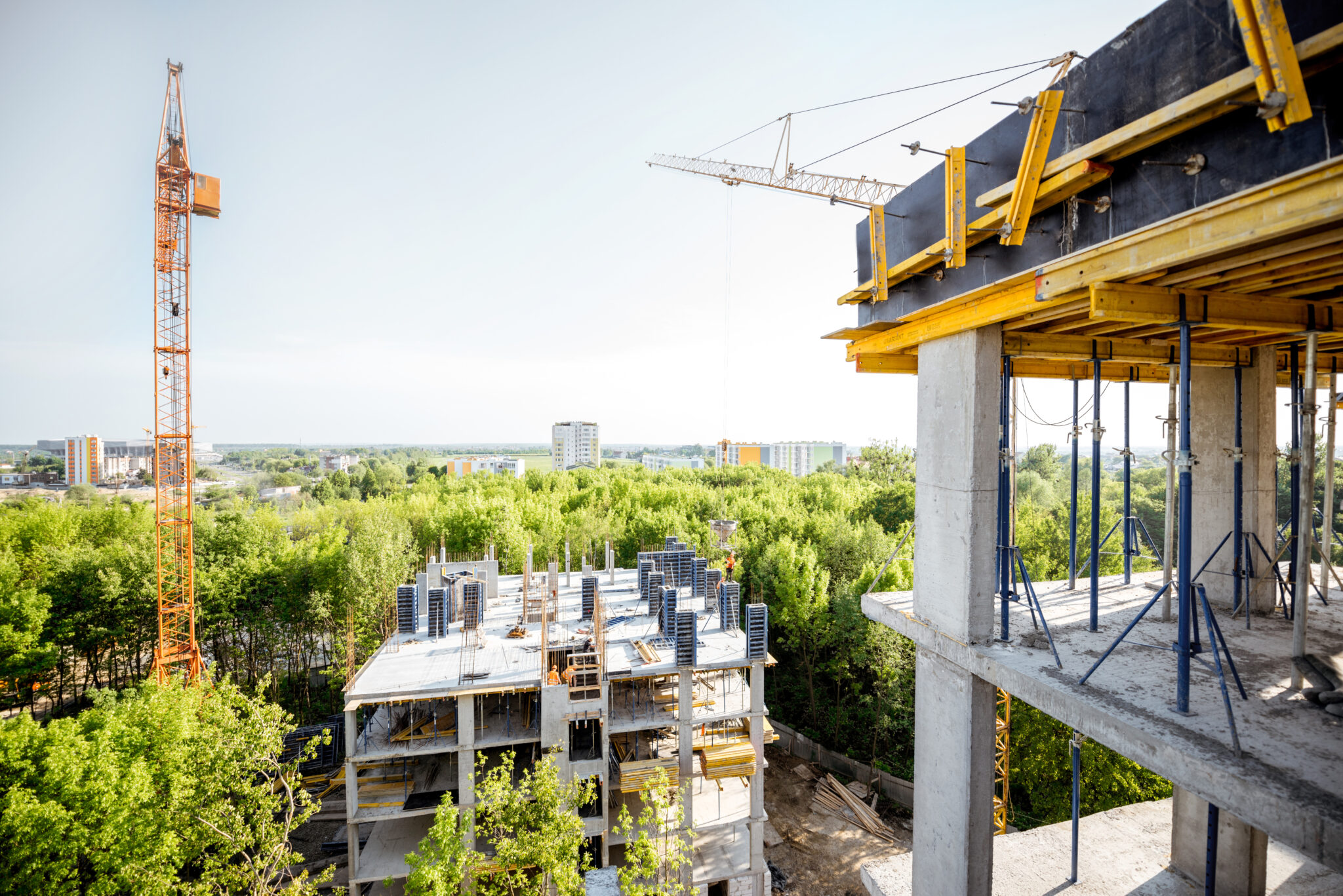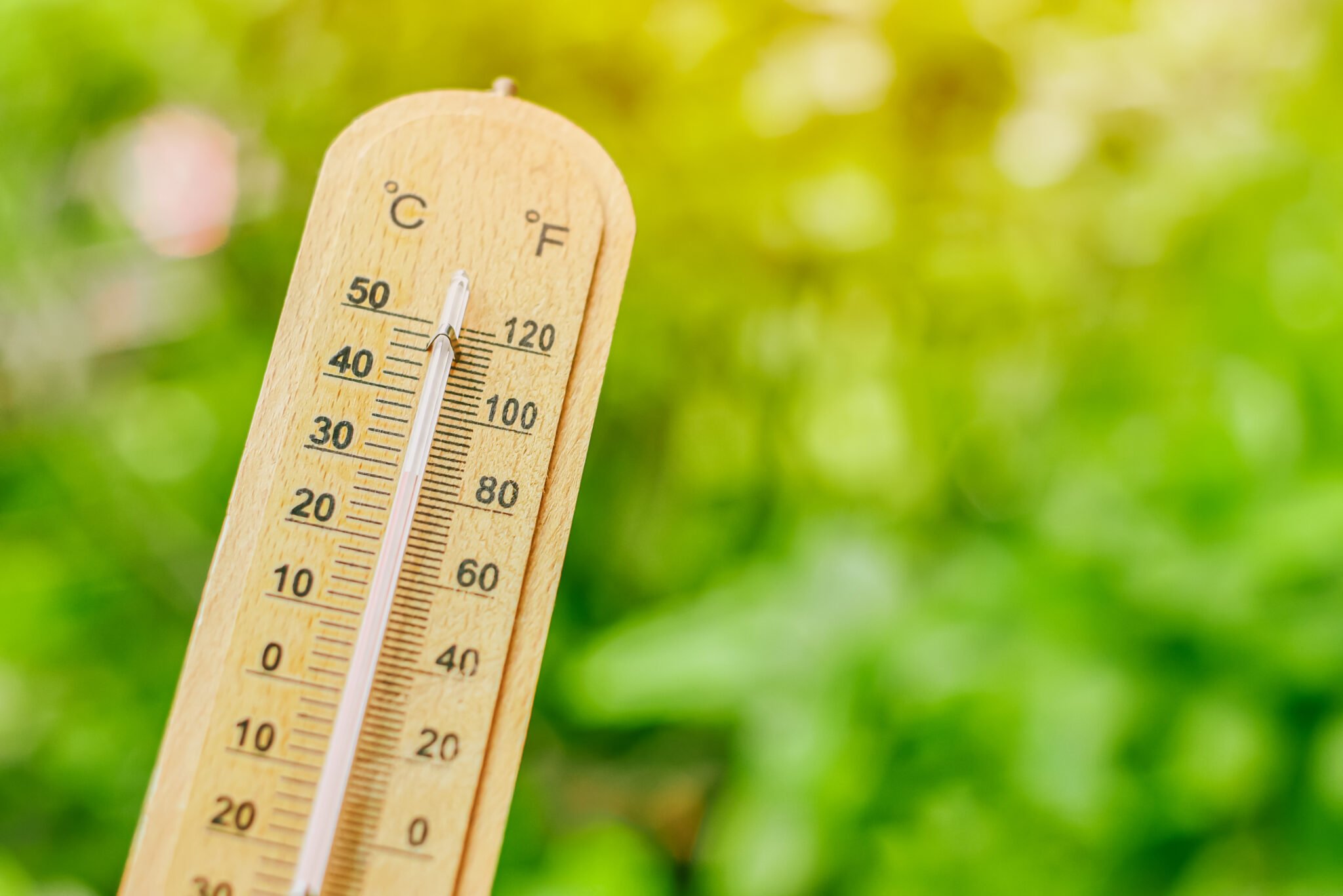What is Post-Tensioning Time?
Concrete has compressive strength, meaning that it can withstand its own weight within a structure. However, it lacks tensile strength. Therefore, as soon as everyday loads are added to a concrete structure, such as vehicles on a bridge, the concrete struggles under the additional weight. This is due to the lack of flexibility, which leads to cracking and weakening of the structure. Usually, reinforcing steel, or rebar, is embedded in the concrete to provide passive reinforcement. But it does not bear any load or force until the concrete has already cracked. This is where post-tensioning time provides additional active reinforcement.
Biggest SmartRock® Savings of the Year are Here!
Post-tensioning has gained significant popularity over the past 30 years, especially in modern high-rise buildings, industrial floors, and residential structures. Today, this technique is used extensively for slabs which cover a large surface area, such as tennis courts or parking lots. Compression is a force that squeezes or crushes, and tension is a force that pulls something apart.
How Does it Work?
The purpose of post-tensioning time is to place the concrete structure under compression in the regions where load causes tensile stress. Post-tensioning offsets this tensile stress. Post-tensioning tendons, which are prestressing steel cables inside plastic ducts or sleeves, are positioned in the formwork before the concrete is placed. Steel tendons used for post-tensioning typically have a tensile strength of 270,000 pounds per square inch (psi), are about 1/2 inch in diameter, and are stressed to a force of 33,000 pounds.
When the concrete has reached a specific initial compressive strength, and before the service loads are applied, the cables or tendons are pulled tight and tensioned. Then, they are anchored to the outer edges of the concrete. Thus maintaining the force in the strand for the life of the structure. The tensioning of the tendons is achieved by using a hydraulic jack. The result is a stiffer concrete slab that is actively compressed and has more capacity to resist tensile forces.
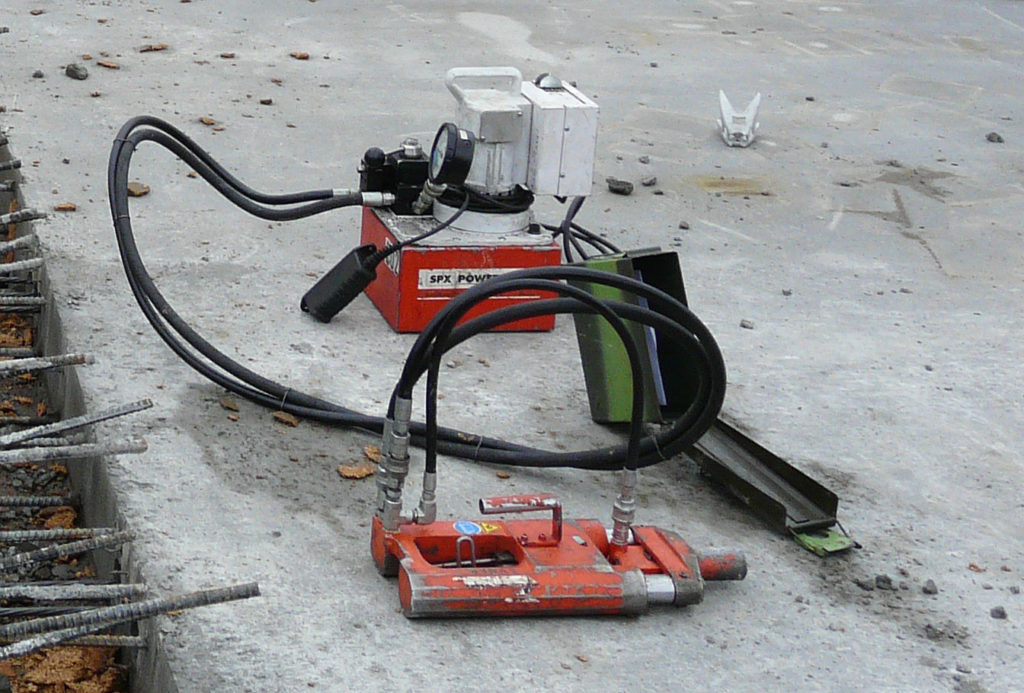
This process must meet the requirements of ACI 423 (prestressed concrete). It should be manufactured and fabricated by a plant that is certified by a program, such as the Post-Tensioning Institute’s (PTI) Plant Certification Program. Their program consists of certifications for both field personnel and post-tensioning plants. “Certification of a plant under this program indicates that the plant and the personnel are capable of producing unbonded single strand tendons in conformance with the PTI’s Specifications for Unbonded Single Strand Tendons.” This training is vital to ensure the performance, serviceability, durability, and safety of the post-tensioned concrete structure.
Advantages of Post-Tensioning
- Controls Cracking: Post-tensioning reduces shrinkage cracks. Cracks that do form are reinforced and held tightly together. This prevents insects from entering the structure and reduces possible water penetration which can cause corrosion, damage, and mold.
- Durability: A post-tensioned structure is more resistant to environmental risks that can cause bendings, such as clay or highly collapsible soils. Bridges using this technique have high intrinsic durability as well. They can be constructed quickly with minimal impact on the human and natural environment.
- Efficiency: Post-tensioning time allows concrete to gain strength faster. This can significantly reduce labour costs and speed up a project. This allows for large structures, such as high-rise buildings, to be made open to the public faster.
- Economical: Structures which use this technique require fewer concrete materials and reinforcing steel. Furthermore, post-tensioned elevated floor systems require fewer and thinner columns. This saves on materials and creates a more aesthetically pleasing open space. Maintenance costs are low as well, provided the tendons are not cut.
Learn how to use concrete temperature monitoring for your post-tensioning here!
Disadvantages of Post-Tensioning
- Safety: Forces generated when the tendons are stressed are high enough to damage the structure or even cause injury to people working on the job site if installation and stressing are not done properly.
- Tendon Repair: The most important thing to remember with a post-tensioned structure is not to cut or drill into a beam or slab with these tendons. Once a tendon has been cut, it is very difficult to repair. Many post-tensioned slabs are often stamped to alert workers, as well as owners, in case any renovations take place in the future.
- Corrosion: Since there are a number of tendons and wires within the post-tensioned concrete, it can result in corrosion. This is likely if the gaps surrounding the tendons and wiring are not filled completely. However, corrosion is largely a result of low-quality material being used.
- Complexity: Usually, a structure can only undergo post-tensioning time with the help of a trained and skilled professional. This is because they require certification. As a result, labour costs could increase if outside third-party specialists are required on-site.
Repair, Rehabilitation, & Strengthening of Tendons
Post-tensioned structures may become damaged by corrosion, impact, wire cracking, or coring and drilling after construction, leading to tendon failure. The strength and serviceability of a structure that has experienced deterioration can be difficult to repair. External post-tensioning can be used to increase and/or restore the load capacity of the structure. This can be done using steel or concrete beams. Repairs should be performed as required to maintain the structure and ensure it is in a safe and serviceable condition.
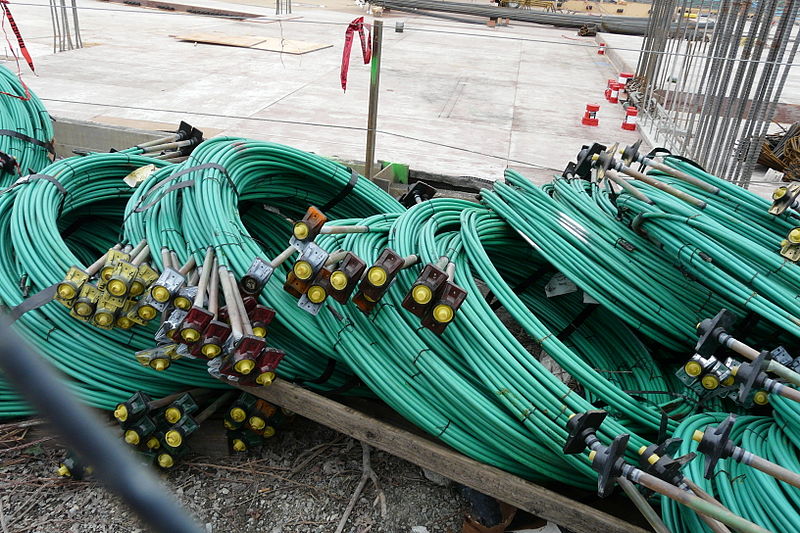
The most effective way to manage the deterioration of a structure is to keep up with its maintenance. This includes practices to limit moisture and ensure adequate drainage and waterproofing by protecting expansion joints and seals. Furthermore, replacing deteriorated grout plugs and implementing protocols to prevent mechanical damage to tendons ensures the longevity of the structure. If deterioration has already begun in the post-tensioned structure, techniques such as tendon drying, re-greasing, injecting with an epoxy resin, and cathodic protection of anchorages can be introduced to limit further progression.
Biggest SmartRock® Savings of the Year are Here!
Monitoring the Strength of Your Concrete Before Post-Tensioning Time
When using post-tensioning in a construction project, it is very important to know the in-situ temperature and strength of your concrete. Doing so allows you to accurately determine when your tendons should be tensioned. Monitoring these measurements of your concrete is therefore essential. If tensioning occurs too early, concrete is subjected to cracking.
As the construction industry seeks out more efficient ways in which to determine the strength of in-situ concrete, technology is advancing to meet these needs. Giatec’s SmartRock wireless sensors monitor the temperature and maturity of concrete in real-time, from fresh to hardened stages. These non-destructive sensors, which are embedded in the concrete, make your concrete data more accessible, easier to understand, and simple to share with team members. Typically, field technicians cast test cylinders, which are sent to a lab for analysis. But the concrete in the cylinder may not share all the properties with the concrete that’s been placed, thanks to variables such as temperature, weather, or improper casting and storing. The results can take up to 24 hours to come back from the lab as well, delaying work.
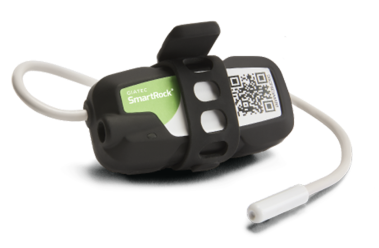
With SmartRock, the temperature history, which is collected every 15 minutes, is used to calculate the maturity index of concrete, enabling the user to predict its early-age compressive strength. This will allow you to more accurately predict when you are able to tension the tendons within your slab. Knowing this information reduces the risk of tensioning too early. Furthermore, with Giatec 360, SmartRock users can set up temperature and strength predictions and thresholds for their pours.
Learn more about the Maturity Method here!
Post-Tensioning During Cold Weather
Monitoring the temperature and strength of your concrete is especially important when post-tensioning in cold weather. As concrete gains strength more slowly in colder temperatures, closely monitoring temperature is important! This ensures the production of high-quality concrete that meets specifications. Among the common problems with concreting in cold weather are the freezing of concrete at early ages, lack of required strength, rapid temperature changes, inadequate protection of the structure, and improper curing procedures.
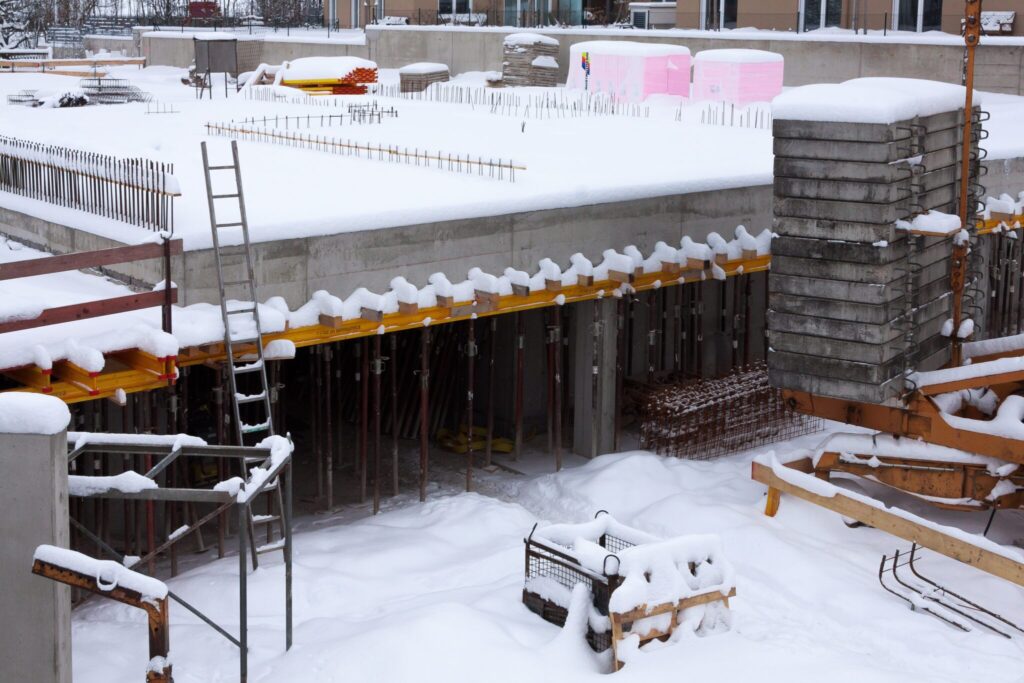
Conquer the Cold with SmartRock!
One of the benefits of fully-embedded sensors, like SmartRock, during cold weather concrete temperature monitoring is the elimination of a physical connection to the loggers. Traditional temperature monitoring systems can be difficult to set up in cold weather. This allows sensors to remain protected in the concrete and eliminates the hassle of having to find the sensors beneath protective blankets. It also eliminates potential malfunctioning from cold temperatures and exposed wires. SmartRock allows contractors to navigate the jobsite with their wireless-enabled smartphone or tablet to collect data without disrupting blanket placement and heat retention. Furthermore, these sensors improve speed and efficiency on the jobsite by enabling contractors to gather real-time temperature, strength, and concrete maturity testing results.
Learn about the 7 mistakes to avoid when working with concrete in cold weather here!
Having this data easily accessible allows contractors to optimize the heating process, decrease energy costs, minimize the risk of concrete cracking, and optimize subsequent construction operations. Furthermore, knowing the temperature of your concrete in real-time ensures concrete quality remains optimal and structural failure is avoided. In this way, it is more challenging to know the exact time in which to tension your tendons as predicting the temperature and strength of your concrete is more difficult in cold weather. Therefore, using wireless sensors to monitor the in-situ temperature and strength/maturity of your concrete in real-time will allow you to make the correct decision when it comes time to tension your concrete.

